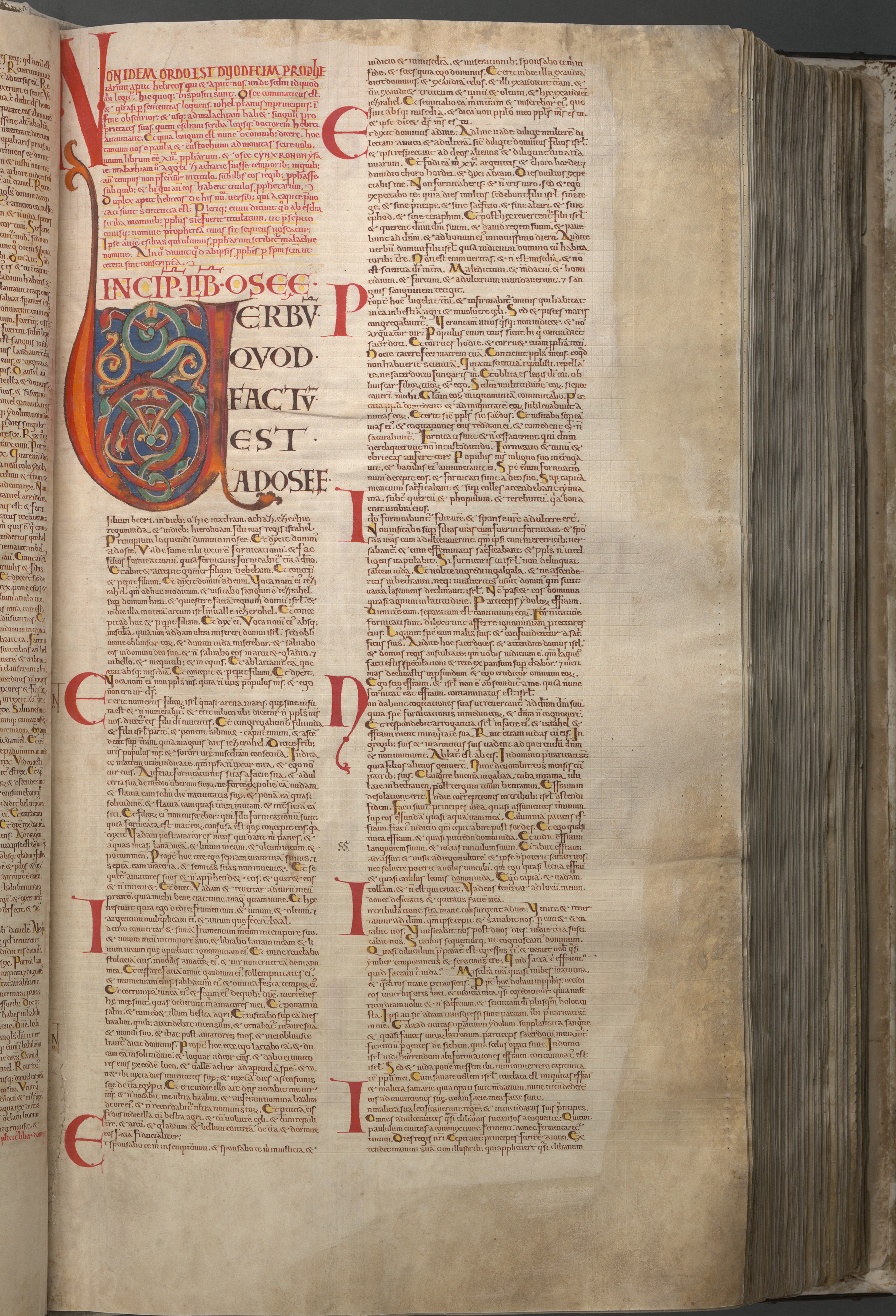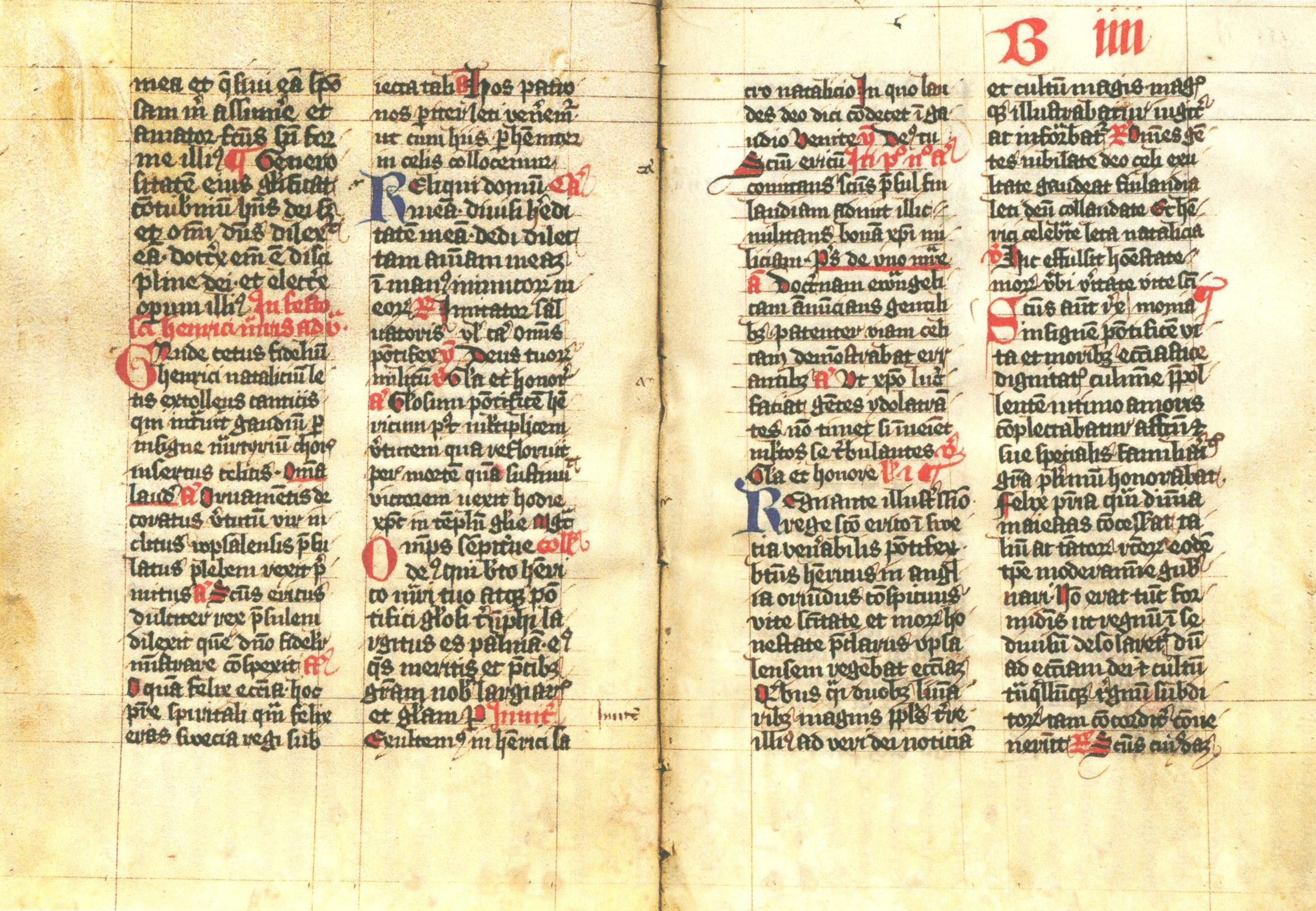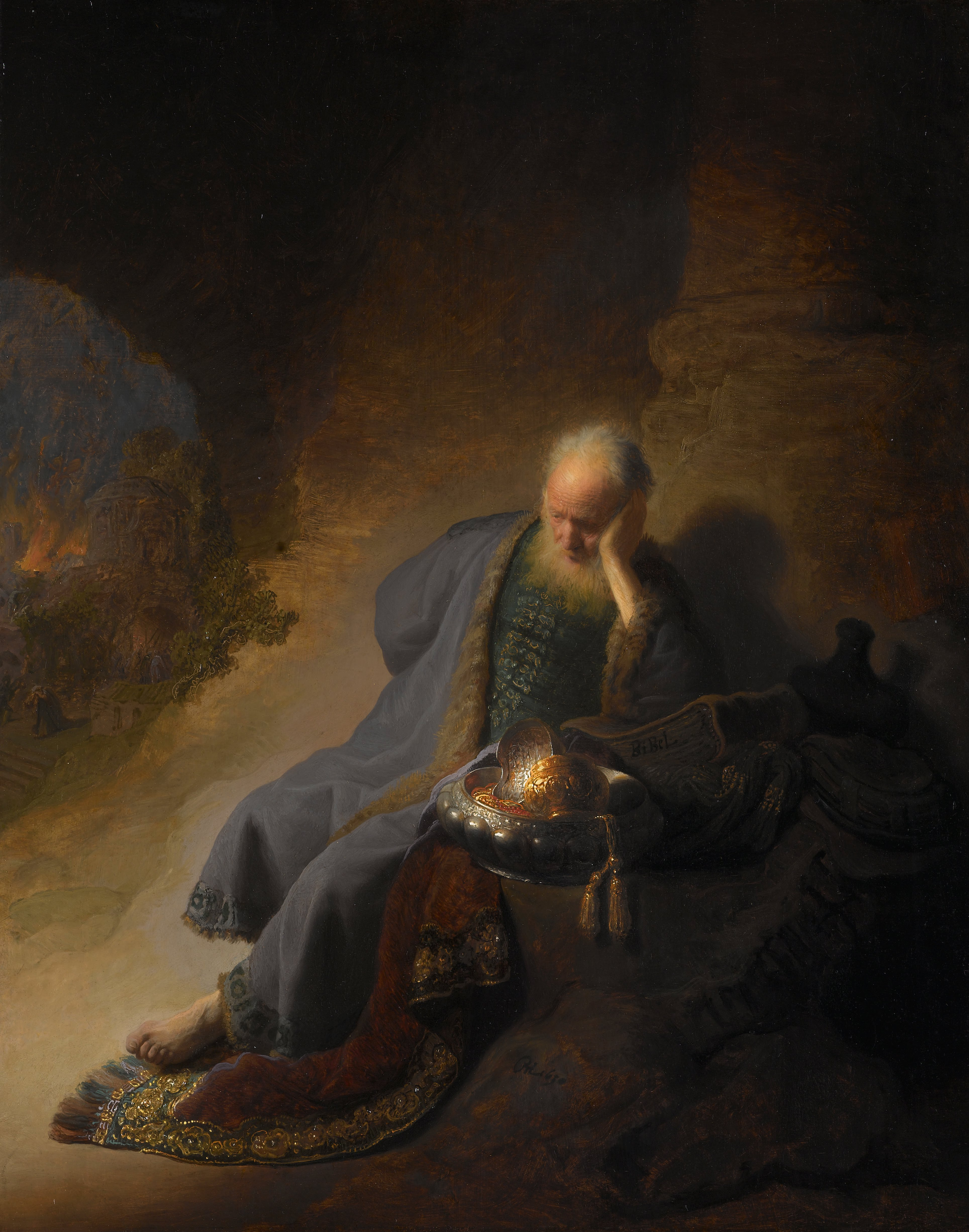|
Twelve Minor Prophets
The Twelve Minor Prophets (, ''Shneim Asar''; , ''Trei Asar'', "Twelve"; , "the Twelve Prophets"; , "the Twelve Prophets"), or the Book of the Twelve, is a collection of twelve prophetic works traditionally attributed to individual prophets, likely compiled into a single anthology by the Persian period. It contains diverse literary forms and themes. Scholarly debate continues over the dating and editorial history of these texts. In the Tanakh, they appear as a single book, "The Twelve", which is the last book of the ''Nevi'im'', the second of three major divisions of the Tanakh. In the Christian Old Testament, the collection appears as twelve individual books, one for each of the prophets: the Book of Hosea, Joel, Amos, Obadiah, Jonah, Micah, Nahum, Habakkuk, Zephaniah, Haggai, Zechariah, and Malachi. Their order, and position in the Old Testament, varies slightly between the Protestant, Catholic and Eastern Orthodox Bibles. The name "Minor Prophets" goes back to August ... [...More Info...] [...Related Items...] OR: [Wikipedia] [Google] [Baidu] |
Achaemenid Empire
The Achaemenid Empire or Achaemenian Empire, also known as the Persian Empire or First Persian Empire (; , , ), was an Iranian peoples, Iranian empire founded by Cyrus the Great of the Achaemenid dynasty in 550 BC. Based in modern-day Iran, it was the List of largest empires#Timeline of largest empires to date, largest empire by that point in history, spanning a total of . The empire spanned from the Balkans and ancient Egypt, Egypt in the west, most of West Asia, the majority of Central Asia to the northeast, and the Indus Basin, Indus Valley of South Asia to the southeast. Around the 7th century BC, the region of Persis in the southwestern portion of the Iranian plateau was settled by the Persians. From Persis, Cyrus rose and defeated the Medes, Median Empire as well as Lydia and the Neo-Babylonian Empire, marking the establishment of a new imperial polity under the Achaemenid dynasty. In the modern era, the Achaemenid Empire has been recognised for its imposition of a succ ... [...More Info...] [...Related Items...] OR: [Wikipedia] [Google] [Baidu] |
Catholic Bible
The term ''Catholic Bible'' can be understood in two ways. More generally, it can refer to a Christian Bible that includes the whole 73-book canon recognized by the Catholic Church, including some of the deuterocanonical books (and parts of books) of the Old Testament which are in the Greek Septuagint collection, but which are not present in the Hebrew Masoretic Text collection. More specifically, the term can refer to a version or translation of the Bible which is published with the Catholic Church's approval, in accordance with Catholic canon law. The current official version of the Catholic Church is the . According to the Decretum Gelasianum (a work written by an anonymous scholar between AD 519 and 553), Catholic Church officials cited a list of books of scripture presented as having been made canonical at the Council of Rome (382). Later, the Catholic Church formally affirmed its canon of scripture with the Synod of Hippo (393), followed by a Council of Carthage (397), an ... [...More Info...] [...Related Items...] OR: [Wikipedia] [Google] [Baidu] |
Armenian Apostolic Church
The Armenian Apostolic Church () is the Autocephaly, autocephalous national church of Armenia. Part of Oriental Orthodoxy, it is one of the most ancient Christianity, Christian churches. The Armenian Apostolic Church, like the Armenian Catholic Church, belongs to the Armenian Rite. The Kingdom of Armenia (antiquity), Kingdom of Armenia was the first state in history to adopt Christianity as its official religion (under the Armenian Apostolic traditions) during the rule of Tiridates III of Armenia, King Tiridates III, of the Arsacid dynasty of Armenia, Arsacid dynasty in the early 4th century. According to tradition, the church originated in the missions of Apostles Bartholomew the Apostle, Bartholomew and Jude the Apostle, Thaddeus (Jude) in the 1st century. St. Gregory the Illuminator was the first official primate (bishop), primate of the church. It is sometimes referred to as the Armenian Apostolic Orthodox Church, Armenian Church or Armenian Gregorian Church. The Armenian Ap ... [...More Info...] [...Related Items...] OR: [Wikipedia] [Google] [Baidu] |
Liturgical Year
The liturgical year, also called the church year, Christian year, ecclesiastical calendar, or kalendar, consists of the cycle of liturgical days and seasons that determines when feast days, including celebrations of saints, are to be observed, and which portions of scripture are to be read. Distinct liturgical colours may be used in connection with different seasons of the liturgical year. The dates of the festivals vary somewhat among the different churches, although the sequence and logic is largely the same. Liturgical cycle The liturgical cycle divides the year into a series of seasons, each with their own mood, theological emphases, and modes of prayer, which can be signified by different ways of decorating churches, colours of paraments and vestments for clergy, scriptural readings, themes for preaching and even different traditions and practices often observed personally or in the home. In churches that follow the liturgical year, the scripture passages for ... [...More Info...] [...Related Items...] OR: [Wikipedia] [Google] [Baidu] |
Lectionary
A lectionary () is a book or listing that contains a collection of scripture readings appointed for Christianity, Christian or Judaism, Jewish worship on a given day or occasion. There are sub-types such as a "gospel lectionary" or evangeliary, and an :wikt:epistolary, epistolary with the readings from the New Testament Epistles. History By the Medieval era the Jewish community had a Weekly Torah portion, standardized schedule of scripture readings from both the Torah and the prophets to be read in the synagogue. A sequential selection was read from the Torah, followed by the "haftarah" – a selection from the prophetic books or historical narratives (e.g. "Judges", "Kings", etc.) closely linked to the selection from the Torah. Jesus may have read a providentially "random" reading when he read from Isaiah 61:1–Isaiah 61:2, 2, as recorded in Luke 4:16–21, when he inaugurated his public ministry. The early Christians adopted the Jewish custom of reading extracts from the Old T ... [...More Info...] [...Related Items...] OR: [Wikipedia] [Google] [Baidu] |
Breviary
A breviary () is a liturgical book used in Christianity for praying the canonical hours, usually recited at seven fixed prayer times. Historically, different breviaries were used in the various parts of Christendom, such as Aberdeen Breviary, Belleville Breviary, Stowe Breviary and Isabella Breviary, although eventually the Roman Breviary became the standard within the Roman Catholic Church (though it was later supplanted with the Liturgy of the Hours); in other Christian denominations such as the Lutheran Churches, different breviaries continue to be used, such as The Brotherhood Prayer Book. Different breviaries The "contents of the breviary, in their essential parts, are derived from the early ages of Christianity", consisting of psalms, Scripture lessons, writings of the Church Fathers, as well as hymns and prayers. From the time of the early Church, the practice of seven fixed prayer times, being attached to , have been taught; in '' Apostolic Tradition ... [...More Info...] [...Related Items...] OR: [Wikipedia] [Google] [Baidu] |
Liturgy
Liturgy is the customary public ritual of worship performed by a religious group. As a religious phenomenon, liturgy represents a communal response to and participation in the sacred through activities reflecting praise, thanksgiving, remembrance, supplication, or repentance. It forms a basis for establishing a relationship with God. Technically speaking, liturgy forms a subset of ritual. The word ''liturgy'', sometimes equated in English as " service", refers to a formal ritual enacted by those who understand themselves to be participating in an action with the divine. Etymology The word ''liturgy'' (), derived from the technical term in ancient Greek (), ''leitourgia'', which means "work or service for the people" is a literal translation of the two affixes λήϊτος, "leitos", derived from the Attic form of λαός ("people, public"), and ἔργον, "ergon", meaning "work, service". In origin, it signified the often expensive offerings wealthy Greeks made in serv ... [...More Info...] [...Related Items...] OR: [Wikipedia] [Google] [Baidu] |
Oxford University Press
Oxford University Press (OUP) is the publishing house of the University of Oxford. It is the largest university press in the world. Its first book was printed in Oxford in 1478, with the Press officially granted the legal right to print books by decree in 1586. It is the second-oldest university press after Cambridge University Press, which was founded in 1534. It is a department of the University of Oxford. It is governed by a group of 15 academics, the Delegates of the Press, appointed by the Vice Chancellor, vice-chancellor of the University of Oxford. The Delegates of the Press are led by the Secretary to the Delegates, who serves as OUP's chief executive and as its major representative on other university bodies. Oxford University Press has had a similar governance structure since the 17th century. The press is located on Walton Street, Oxford, Walton Street, Oxford, opposite Somerville College, Oxford, Somerville College, in the inner suburb of Jericho, Oxford, Jericho. ... [...More Info...] [...Related Items...] OR: [Wikipedia] [Google] [Baidu] |
Book Of Daniel
The Book of Daniel is a 2nd-century BC biblical apocalypse with a 6th-century BC setting. It is ostensibly a narrative detailing the experiences and Prophecy, prophetic visions of Daniel, a Jewish Babylonian captivity, exile in Babylon. The text features prophecy rooted in Jewish history as well as a eschatology, portrayal of the end times that is cosmic in scope and political in its focus. The message of the text intended for the original audience was that just as the Yahweh, God of Israel saves Daniel from his enemies, so too he would save the Israelites in their present oppression. The Hebrew Bible includes Daniel as one of the Ketuvim, while Christian biblical canons group the work with the major prophets. It divides into two parts: a set of six court tales in chapters 1–6, written mostly in Biblical Aramaic, and four apocalyptic visions in chapters 7–12, written mainly in Late Biblical Hebrew; the Septuagint, the earliest extant Greek translation of the Hebrew ... [...More Info...] [...Related Items...] OR: [Wikipedia] [Google] [Baidu] |
Book Of Ezekiel
The Book of Ezekiel is the third of the Nevi'im#Latter Prophets, Latter Prophets in the Hebrew Bible, Tanakh (Hebrew Bible) and one of the Major Prophets, major prophetic books in the Christian Bible, where it follows Book of Isaiah, Isaiah and book of Jeremiah, Jeremiah. According to the book itself, it records six visions of the Biblical prophet, prophet Ezekiel, exiled in Babylon, during the 22 years from 593 to 571 BC. It is the product of a long and complex history and does not necessarily preserve the words of the prophet. The visions and the book are structured around three themes: (1) judgment on Israel (chapters 1–24); (2) judgment on the nations (chapters 25–32); and (3) future blessings for Israel (chapters 33–48). Its themes include the concepts of the Divine presence#Judaism, presence of God, purity, Israel as a divine community, and individual responsibility to God. Its later influence has included the development of Mysticism, mystical and apocalyptic tr ... [...More Info...] [...Related Items...] OR: [Wikipedia] [Google] [Baidu] |
Book Of Jeremiah
The Book of Jeremiah () is the second of the Latter Prophets in the Hebrew Bible, and the second of the Prophets in the Christian Old Testament. The superscription at chapter Jeremiah 1#Superscription, Jeremiah 1:1–3 identifies the book as "the words of Jeremiah son of Hilkiah". Of all the prophets, Jeremiah comes through most clearly as a person, ruminating to his scribe Baruch ben Neriah, Baruch about his role as a servant of God with little good news for his audience. His book is intended as a message to the Jews in exile in Babylon, explaining the disaster of exile as God's response to Israel's pagan worship: the people, says Jeremiah, are like an unfaithful wife and rebellious children, their infidelity and rebelliousness made judgment inevitable, although restoration and a new covenant are foreshadowed. Authentic oracles of Jeremiah are probably to be found in the poetic sections of Jeremiah 1, chapters 1 through Jeremiah 25, 25, but the book as a whole has been heavily ... [...More Info...] [...Related Items...] OR: [Wikipedia] [Google] [Baidu] |







